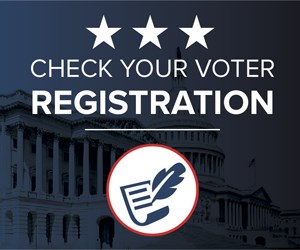by Stephen P. Halbrook
The Second Amendment to the U.S. Constitution protects an individual right to keep and bear arms, explained U.S. Attorney General John Ashcroft, by letter dated May 17, 2001, to James Jay Baker, Executive Director of the National Rifle Association's Institute for Legislative Action. The Violence Policy Center, a lobbying organization which seeks to ban guns, has responded with a superficial attack entitled Shot Full of Holes: Deconstructing John Ashcroft's Second Amendment.
The VPC document combines falwed historical interpretation with hysteria, such as that Ashcroft's views would protect "armed career criminals" in their deadly pursuits. While the Fourth Amendment right against unreasonable search and seizure and other Bill of Rights guarantees protect even criminals, no one disputes that such criminals have no right to keep and bear arms. Indeed, the Ashcroft Justice Department has launched a vigorous campaign - absent in the Reno Department - against felons who possess firearms.
On assuming office, Attorney General Ashcroft took an oath
to support and defend the Constitution, which includes the Second
Amendment. From the standpoint of legal ethics, it is admirable
when prosecuting authorities candidly concede that they or their
predecessors took an erroneous position regarding the law, for
their duty is to see that justice is done, not to win cases at any
price. Yet VPC has filed an ethics complaint against Ashcroft for
expressing in good faith (and with persuasive documentation) an
opinion about a provision of the Bill of Rights.
VPC purports to refute Ashcroft's two-page letter on the Second Amendment, but VPC's silence on the Constitution's text is deafening. The Second Amendment provides: "A well regulated militia, being necessary for the security of a free state, the right of the people to keep and bear arms, shall not be infringed." This "right of the people" is not limited, as VPC claims, to actual service in a state military force. The Framers knew how to limit a right to actual service -- the Fifth Amendment provides for indictment by grand jury "except in cases arising . . . in the militia, when in actual service . . . ."
The declaration for a well regulated militia expresses the serious federal principle that the ultimate purpose of the Second Amendment is to secure a free state, not simply to guarantee sport and recreation. Such a militia is encouraged by recognition of the people's right to keep and bear arms. The Second Amendment declares a "right of the people," not a "power of the states." Only individuals have "rights," and only governmental units have "powers." The state militia power is declared in Article I, Section 8 of the Constitution, which "reserv(es) to the states respectively, the appointment of the officers, and the authority of training the militia according to the discipline prescribed by Congress . . . ."
The Ashcroft letter begins by noting that comment would not be made on existing litigation. VPC launched an attack on the opinion by Judge Cummings in United States v. Emerson, 46 F. Supp. 598 (N.D. Tex. 1999), the appeal of which is pending in the Fifth Circuit. This opinion is unequaled in its scholarship and analysis in federal jurisprudence concerning the Second Amendment. The court held the Second Amendment to invalidate a federal law which prohibits possession of a firearm by a person against whom a domestic violence restraining order has been entered without benefit of a hearing and with no factual finding of danger by the court. Such orders are routinely entered in Texas divorce cases. [Editor's Note: On October 16, 2001, a three judge panel of the Fifth Circut Court upheld the interpretation of the Second Amendment Judge Cummings handed down in U.S. v. Emerson.]
VPC points to federal decisions which state that the Second Amendment only protects a "collective" state power to maintain militias. Such statements are typically dicta in cases upholding convictions against felons in possession of firearms. No federal court has ever upheld a general prohibition by law-abiding citizens of firearms. While the lack of serious judicial treatment of the Second Amendment resembles the shoddy treatment of the First Amendment through the 1920s, the Fifth Circuit noted in a previous case:
It is also conceivable that some applications of section 922(q) might raise Second Amendment concerns. Lopez does not raise the Second Amendment and thus we do not now consider it. Nevertheless, this orphan of the Bill of Rights may be something of a brooding omnipresence here. For an argument that the Second Amendment should be taken seriously, see Levinson, The Embarrassing Second Amendment, 99 Yale L.J. 637 (1989).
United States v. Lopez, 2 F. 3d 1342, 1364 n.46 (5th Cir. 1993), aff'd, 514 U.S. 549 (1995) (declaring unconstitutional federal prohibition on possession of a firearm in a school zone).
Contrary to VPC, it can hardly be said that under Fifth Circuit precedent the Second Amendment does not protect individuals. VPC cites Kostmayer v. Department of Treasury, 178 F.3d 1291 (5th Cir.), cert. denied, 528 U.S. 928 (1999), but that opinion is unpublished and, according to circuit rules, may not be cited as precedent. VPC also cites some district courts that have rejected Emerson. The fact remains that Emerson is the only decision squarely to face the music -- the text of the Second Amendment, the Framers' intent, and the Supreme Court decisions.
Attorney General Ashcroft states that "the text and the original intent of the Second Amendment clearly protect the of right of individuals to keep and bear firearms." VPC claims that this contradicts United States v. Miller, 307 U.S. 174 (1939), but Miller held only that absent evidence in the trial court that a sawed-off shotgun "at this time has some reasonable relationship to the preservation or efficiency of a well regulated militia, we cannot say that the Second Amendment guarantees the right to keep and bear such an instrument. Certainly it is not within judicial notice that this weapon is any part of the ordinary military equipment or that its use could contribute to the common defense."1 Id. at 178. The test was not whether the person in possession of the arm was a member of a formal militia unit, but whether the arm "at this time" is "ordinary military equipment" or its use "could" potentially assist in the common defense. Yet VPC cites this page for the blatant assertion that "Miller holds that such a right is not legitimately transformed into a right of any individual to acquire and possess weapons."
Referring to the militia clause of the Constitution, Miller stated that "to assure the continuation and render possible the effectiveness of such forces the declaration and guarantee of the Second Amendment were made." Id. at 178. Historically "the Militia comprised all males physically capable of acting in concert for the common defense," and "these men were expected to appear bearing arms supplied by themselves and of the kind in common use at the time." Id. at 179. Contrary to VPC, the Second Amendment's two clauses complement each other: guaranteeing the right of the people to keep and bear arms ensures that a well regulated militia will be available.
While Miller does not support its position, VPC argues that this single precedent resolves everything for all time -- a curious assumption when one considers the ever evolving case law on other constitutional provisions. VPC cites Planned Parenthood of Southeastern Pennsylvania v. Casey, 505 U.S. 833, 841 (1992), but that case states:
Neither the Bill of Rights nor the specific practices of States at the time of the adoption of the Fourteenth Amendment marks the outer limits of the substantive sphere of liberty which the Fourteenth Amendment protects. See U.S. Const., Amend. 9. As the second Justice Harlan recognized:
"(T)he full scope of the liberty guaranteed by the Due Process Clause cannot be found in or limited by the precise terms of the specific guarantees elsewhere provided in the Constitution . . . (such as) the freedom of speech, press, and religion; the right to keep and bear arms. . . . It is a rational continuum which, broadly speaking, includes a freedom from all substantial arbitrary impositions and purposeless restraints. . . ."
Thus, the right to keep and bear arms is characterized as one of the "specific guarantees" of the Constitution, and no restriction to military service is mentioned.
Ashcroft's letter continues that "some have argued that the Second Amendment guarantees only a 'collective' right of the States to maintain militias . . . ." VPC claims that this "some" includes the Supreme Court, which is false, along with certain "eminent scholars." Not a single one of these "eminent scholars" has published a book on the Second Amendment, and the Standard Model among scholars is the individual rights interpretation. No scholar or court has argued seriously that the Second Amendment guarantees a "right" to join or bear arms in the National Guard or a state militia -- such organizations make their own recruitment and employment decisions. This argument, contrived in the twentieth century to emasculate the Second Amendment, has never been taken seriously on the merits.
The Standard Model is buttressed by two books and scores of scholarly articles. Concurring in Printz v. United States, 521 U.S. 898, 938-39 n.2 (1997), Justice Thomas cited some of them:
Marshaling an impressive array of historical evidence, a growing body of scholarly commentary indicates that the "right to keep and bear arms" is, as the Amendment's text suggests, a personal right. See, e.g., J. Malcolm, To Keep and Bear Arms: The Origins of an Anglo-American Right 162 (1994); S. Halbrook, That Every Man Be Armed, The Evolution of a Constitutional Right (1984); Van Alstyne, The Second Amendment and the Personal Right to Arms, 43 Duke L. J. 1236 (1994); Amar, The Bill of Rights and the Fourteenth Amendment, 101 Yale L. J. 1193 (1992); Cottrol & Diamond, The Second Amendment: Toward an Afro-Americanist Reconsideration, 80 Geo. L. J. 309 (1991); Levinson, The Embarrassing Second Amendment, 99 Yale L. J. 637 (1989); Kates, Handgun Prohibition and the Original Meaning of the Second Amendment, 82 Mich. L. Rev. 204 (1983). . . .
As Justice Thomas further noted, Miller "did not, however, attempt to define, or otherwise construe, the substantive right protected by the Second Amendment." 521 U.S. at 938 n.1. "Perhaps, at some future date, this Court will have the opportunity to determine whether Justice Story was correct when he wrote that the right to bear arms 'has justly been considered, as the palladium of the liberties of













